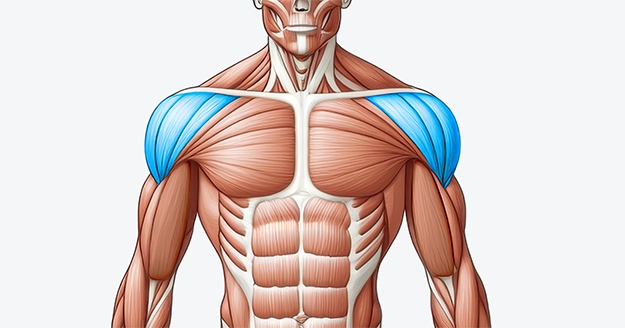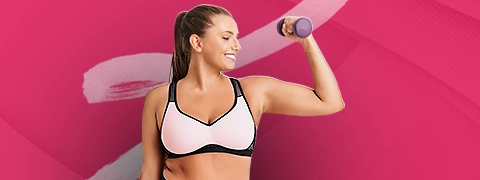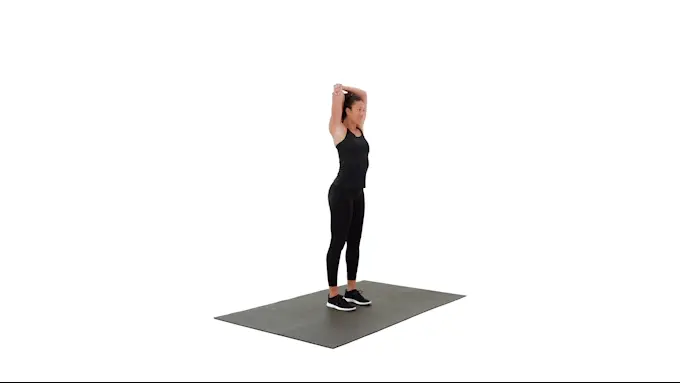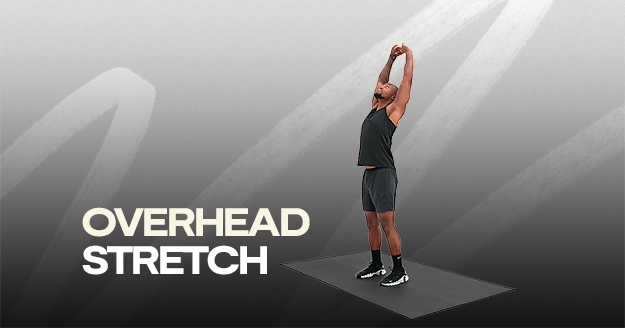Exercise Profile
Overhead Stretch Overview
The overhead stretch improves flexibility, posture, and overall upper body mobility. By reaching the arms upward, this movement stretches the chest, lats, and muscles of the shoulder girdle, helping to combat the effects of poor posture from prolonged sitting or desk work.
The overhead stretch benefits all types of individuals, regardless of experience level. For beginners, it improves flexibility posture and helps ease into exercise, while for more advanced individuals, it supports mobility, injury prevention, and enhances performance and recovery.
The overhead stretch can be performed in various settings, making it easy to incorporate into daily routines—whether during a workout, as part of a warm-up or cool-down, or simply as a quick break throughout the day.

Overhead Stretch Instructions
Step 1: Make sure your hips and feet are in line as you stand and brace your core.
Step 2: Interlock your fingers with palms down, keeping your head neutral and back flat. Keep a slight bend in your elbows.
Step 3: Raise your arms over your head and hold for the recommended time.
Step 4: Lower your arms, bringing them back to the starting position.

Common Overhead Stretch Variations
Here are some common overhead stretch variations:
Overhead Stretch Tips
- Keep your core engaged to support your lower back and prevent overextension.
- Take slow, deep breaths while stretching to help relax your muscles and improve the stretch.
- Ease into the stretch and avoid forcing your arms or torso into an uncomfortable position.
Overhead Stretch Common Mistakes
- Overextending the Neck: Don’t tilt your head too far back or forward while stretching.
- Not Maintaining Proper Alignment: Stand with your feet hip-width apart and keep your hips and shoulders square.
- Shrugging Shoulders: Don’t raise your shoulders toward your ears, as it creates unnecessary neck and upper back tension.
Frequently Asked Questions
What if I can’t reach my arms all the way overhead?
If you can’t fully extend your arms overhead, don’t worry. Stretch within your current range of motion and gradually work on increasing your flexibility over time. You can also use a resistance band or towel for extra assistance.
Can the overhead tricep stretch improve my posture?
Yes, the hands behind the head stretch opens up the chest and shoulders, helping to counteract poor posture from sitting or slouching. It encourages better spinal alignment and helps alleviate tension in the upper back.
Can I do the overhead tricep stretch while sitting at my desk?
Yes, you can perform a seated version of the overhead shoulder stretch at your desk to help relieve tension from sitting and improve posture throughout the day.
Post your post-workout selfies in IG and tag @trainestapp, #trainest, or DM them to us to get a shoutout on Trainest Stories!



